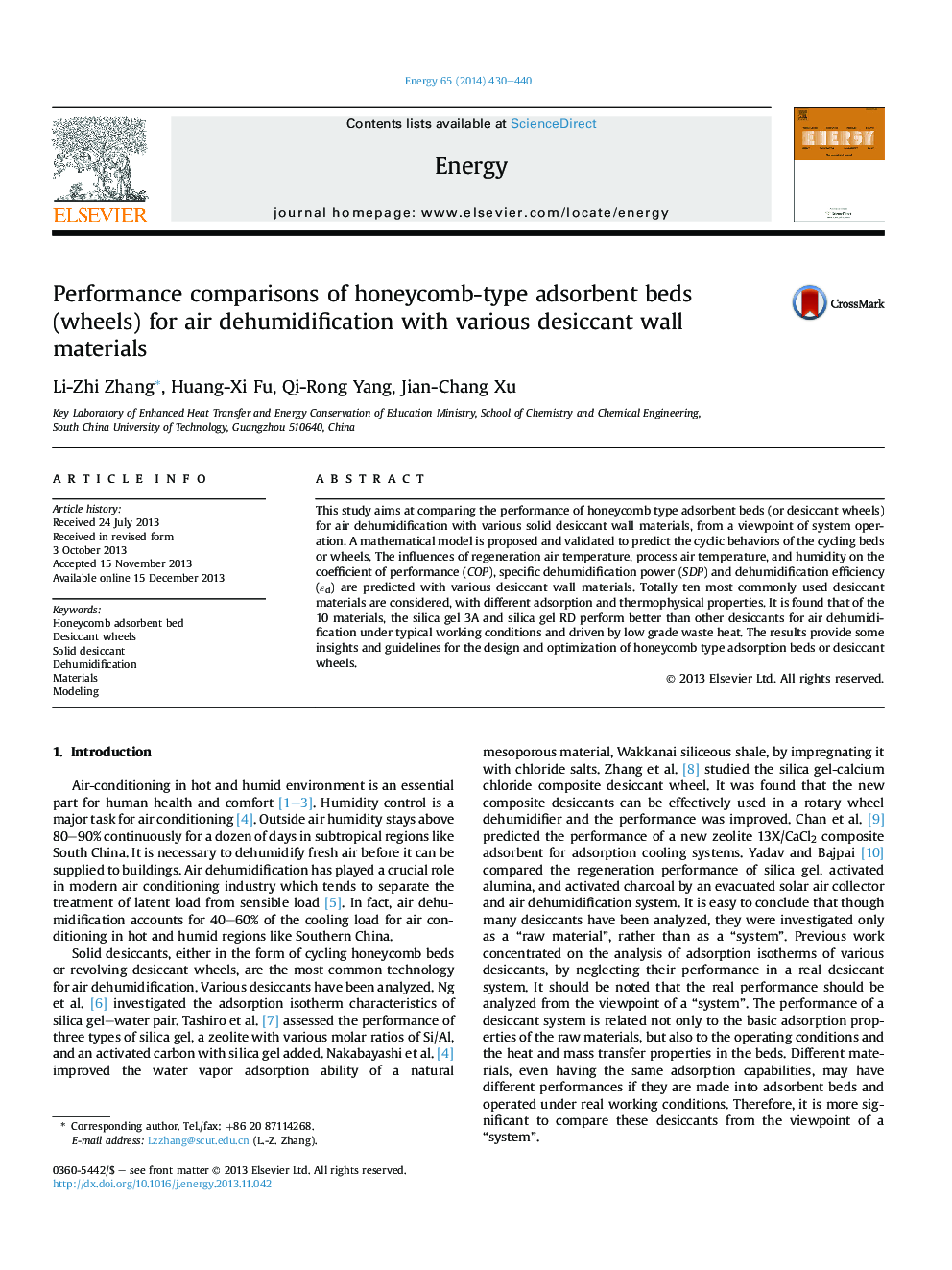| Article ID | Journal | Published Year | Pages | File Type |
|---|---|---|---|---|
| 1732699 | Energy | 2014 | 11 Pages |
•Various materials of cycling adsorbent beds for air dehumidification are compared from “system operation”.•Four weather conditions are classified for performance analysis.•A transient one-dimensional model is set up for analysis.•An in-situ self developed Silica Gel B material in honeycomb type is used for validation.•For performance in hot and humid conditions, silica gel 3A and silica gel RD are better.
This study aims at comparing the performance of honeycomb type adsorbent beds (or desiccant wheels) for air dehumidification with various solid desiccant wall materials, from a viewpoint of system operation. A mathematical model is proposed and validated to predict the cyclic behaviors of the cycling beds or wheels. The influences of regeneration air temperature, process air temperature, and humidity on the coefficient of performance (COP), specific dehumidification power (SDP) and dehumidification efficiency (εd) are predicted with various desiccant wall materials. Totally ten most commonly used desiccant materials are considered, with different adsorption and thermophysical properties. It is found that of the 10 materials, the silica gel 3A and silica gel RD perform better than other desiccants for air dehumidification under typical working conditions and driven by low grade waste heat. The results provide some insights and guidelines for the design and optimization of honeycomb type adsorption beds or desiccant wheels.
